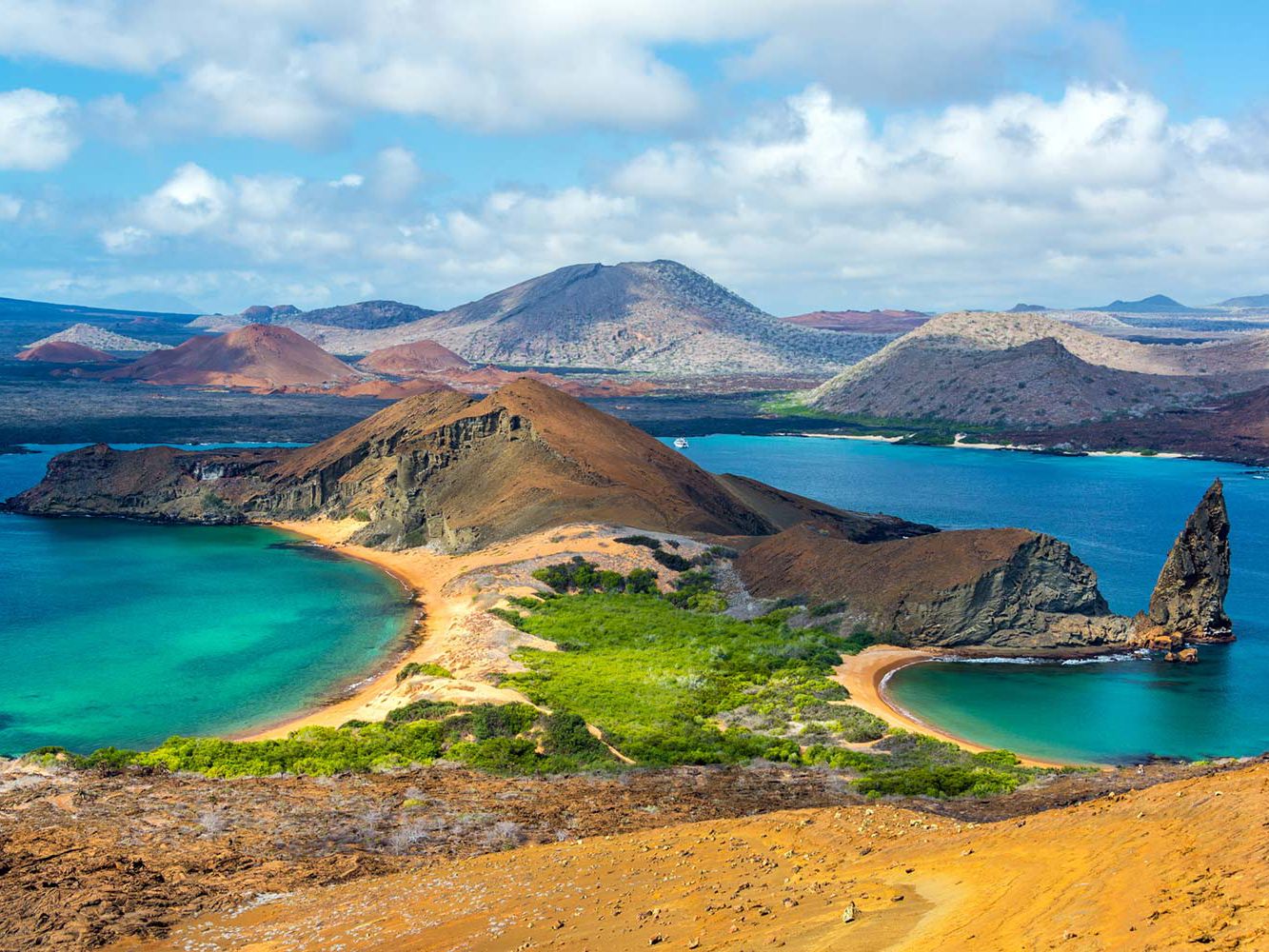Visiting the Galapagos Islands is like stepping into one of those BBC nature documentaries narrated by Sir David Attenborough.
In this archipelago, which is located 600 miles off the coast of Ecuador, you can swim with sea lions, walk alongside the world’s largest tortoise, and explore dynamic, dramatic landscapes utterly unlike any other place on Earth.
Due to their remote location, the Galapagos Islands remained untouched for millions of years before human discovery.
The most famous early explorer of the archipelago was Charles Darwin, who developed his theory of evolution by natural selection after his visit to the Galapagos in 1835.
Because approximately 97% of the archipelago is protected as part of the Galapagos Islands National Park, they still remain relatively untouched today.
This is truly a nature-lovers’ haven, where unusual endemic plants and animals have adapted genetically in order to thrive.
In fact, the Galapagos Islands is such a spellbinding melting pot of scientifically significant species that it was named the world’s first UNESCO World Heritage Site in 1987.
The archipelago has been capturing the imagination of travelers for centuries now, and some 200,000 people make the journey each year. But how much do you actually know about these 19 exceptionally biodiverse islands?
Read on for 21 fascinating facts about the Galapagos Islands, including trivial tidbits on the wildlife, places to go, things to do, and lots of practical info.
READ MORE: 70 Cool & Weird Animals Around the World
Places to Visit in the Galapagos Islands
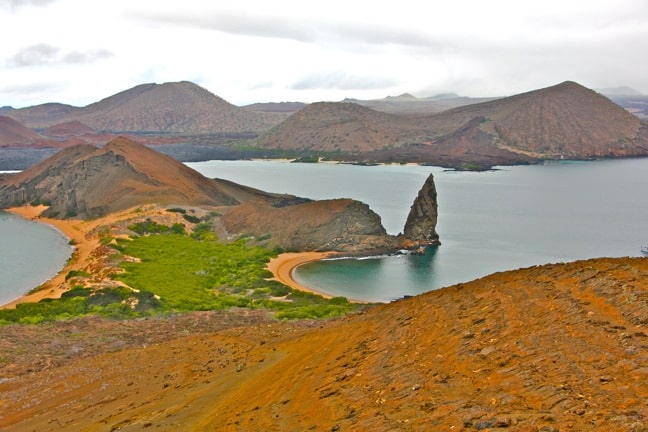
1. The Islands
The Galapagos is an archipelago of 19 islands in the Pacific Ocean. It’s located on a junction where 3 tectonic plates meet, and 13 of the islands are volcanic.
The archipelago is actually a result of numerous volcanic eruptions over millions of years (including 13 in the last century).
The oldest island, Espanola, is estimated to be around 3.5 million years old, but many of the others are still forming. The youngest island is Fernandina, at a youthful 1 million years old.
Each island has its own unique landscapes, wildlife, and activities, and only 5 of them are actually inhabited by people.
Small communities are dotted across San Cristobal, Santa Cruz, Isabela, Floreana, and Baltra. The rest of the islands are completely devoid of human presence.
By boat, you can visit uninhabited islands like Bartolome (one of the most photographed places in the Galapagos due to its stunning crescent bays and moon-like landscape), Rabida (for a red sand beach that is home to flamingos), and Isla Mosquera (a small lava reef where you can swim with sea lions).
Some Galapagos small ship cruises will incorporate trips to these uninhabited islands into the itinerary.
READ MORE: The 30 Best Exotic Islands to Visit

2. The Charles Darwin Research Station
The Charles Darwin Research Station is a short walk away from Puerto Ayora on Santa Cruz Island.
It’s a great place to learn more about the natural history of the islands, as well as the ongoing conservation work undertaken by the Charles Darwin Foundation.
They have an exhibition hall where you can learn about 60 years of scientific research on the islands, as well as see photography exhibits and natural history collections.
There’s also an enormous skeleton of a Bryde’s whale, a garden filled with native flora, a Galapagos Tortoise breeding facility, and a public library with specialized books on natural sciences.
Of course, Darwin didn’t discover the Galapagos Islands. They were accidentally discovered in 1535 by a Panamanian bishop, Father Tomas Berlanga, whose ship to Peru blew off course.
But Darwin’s name has been inextricably linked to the Galapagos since the 1859 publication of “On the Origin of Species,” which remains an important piece of scientific literature today.
The Charles Darwin Foundation continues his dedication to scientific research on the islands and advises the Ecuadorian government on how to protect and preserve Galapagos wildlife and natural resources.
READ MORE: 30 Cool & Weird Ocean Animals Around the World
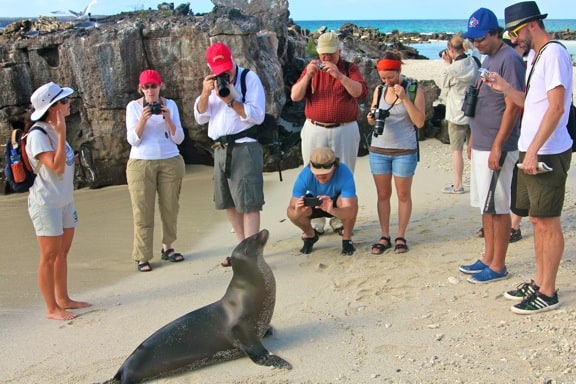
3. Tortuga Bay
Tortuga Bay is your stereotypical postcard-perfect powder white beach.
It’s located on Santa Cruz Island, a 40-minute walk from the gatehouse, and is one of the most popular places for swimming and snorkeling on the island.
You’ll likely have a chance to snorkel alongside fish, sea turtles, reef sharks, and marine iguanas, while boobies fly overhead and dive into the water for their dinner.
READ MORE: What is Ecotourism? (The History & Principles of Responsible Travel)
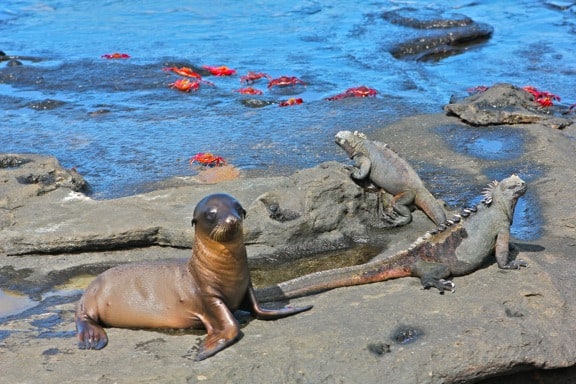
4. La Loberia
A $3 taxi ride will take you from the center of San Cristobal to La Loberia, a small, crescent-shaped bay that’s well off the tourist trail.
It’s well worth spending a day here for the chance to swim alongside dozens of Galapagos sea lions and their adorable pups.
Lots of sea lions can be found dozing on the beach, and they’re comfortable enough around humans to allow you to doze nearby without concern.
Sea turtles are also occasionally present in the shallows, and the water offers excellent visibility.
While you can’t touch the wildlife in the Galapagos Islands, most species are so comfortable around people that they may come close to you.
However, it is advised that you make an effort to stay at least 10 feet away so you don’t disturb them. This applies even if they approach you of their own accord.
READ MORE: Swimming with Galapagos Sea Lions (Video)

5. Volcanoes
The Galapagos is home to both extinct and active volcanoes and does have occasional eruptions. The last volcanic eruption was on Fernandina in 2018.
There are 12 active volcanoes, including Pinta (which last erupted in 1928) and Marchena (which has one of the largest volcanic lakes on the islands).
Most notably, you can visit Wolf, which is the tallest volcano in the Galapagos.
Located on the northern tip of Isabela Island, it stands at an imposing 1707 meters (5600 feet) high, with lava covering the floor of the caldera.
If you’re more interested in giant Galapagos tortoises wandering around the side a volcano, you can request a permit to hike Volcan Alcedo.
The summit has a caldera that is 7 kilometers (4.3 miles) wide, and the steaming fumaroles and views from the top are truly a sight to see.
The Galapagos is also home to a series of underground tunnels, one of which is in the village of Bellavista in the Santa Cruz Highlands.
You can walk through these lava tubes, which were formed by flowing lava that carved out tunnels as it moved beneath the earth’s surface.
READ MORE: The 20 Best Wildlife Parks & Wildlife Tours in the World

6. The Santa Cruz Highlands
The Santa Cruz Highlands are also where you’ll find the largest population of giant Galapagos tortoises, some of whom are over a hundred years old.
The higher altitude of the region allowed the Escalesia and Miconia forests to form, and the lush vegetation and fertile soil there has created the perfect natural habitat for the species.
You’ll be able to walk (or stand, as they don’t exactly move quickly) next to scores of tortoises as they slowly navigate through the leafy undergrowth.
The species was hunted nearly to the point of extinction by whalers in the 19th century, but ongoing Galapagos conservation efforts managed to save the population.
The highlands are also a prime spot for bird watching. Nearly all species of birds of the Galapagos Islands have been spotted here at some point.
READ MORE: 10 Eco Lessons in Quotes from The Lorax (Dr Seuss’ Conservation Classic)
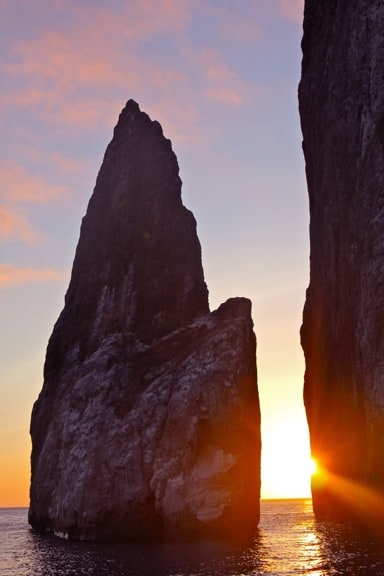
7. Kicker Rock
Kicker Rock is a popular day trip from San Cristobal Island and is included on many Galapagos Islands cruise itineraries.
This is an unmistakable rock that rises out of the Pacific Ocean and is a popular snorkeling and diving spot.
Fun Galapagos Island fact: It’s also called Leon Dormido, because it is said to look like a sleeping lion.
The waters surrounding the rock can get choppy, but there is a diverse range of marine life that can be found here.
You’re almost guaranteed sightings of an array of underwater animals, including sea turtles, eagle rays, Galapagos sharks, and starfish.
But don’t be so captivated by the marine life below that you forget to look up. The rock is a refuge for frigate birds, and you may also see Nazca boobies.
READ MORE: Top 15 Female Wildlife Conservationists & Animal Rights Activists
Things to Do in the Galapagos Islands
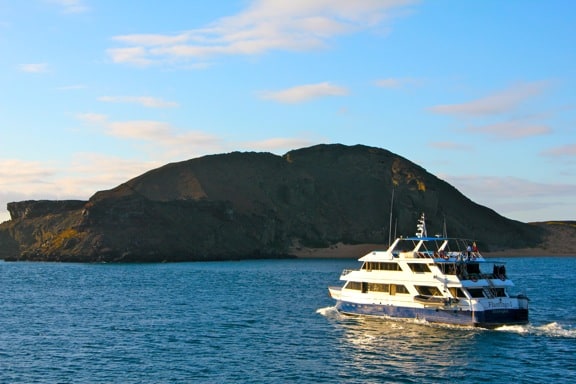
8. Go Island Hopping
With 19 islands, you probably won’t have time to visit them all. But one of the coolest perks of cruising the Galapagos is the ability to hop between islands.
Travelers who choose to explore the area by land can, of course, organize day trips to islands that are close to their chosen base.
But because of the long distances involved, the best way to see more of the Galapagos is by taking a cruise.
Most Galapagos cruises travel between islands at night in order to maximize your daylight time for activities.
Most days will include shore landings, snorkeling opportunities, and Zodiac rides to smaller islands that land-based tourists usually can’t visit.
READ MORE: 20 Best Caribbean Islands to Visit (If You Love Nature & Hate Crowds)
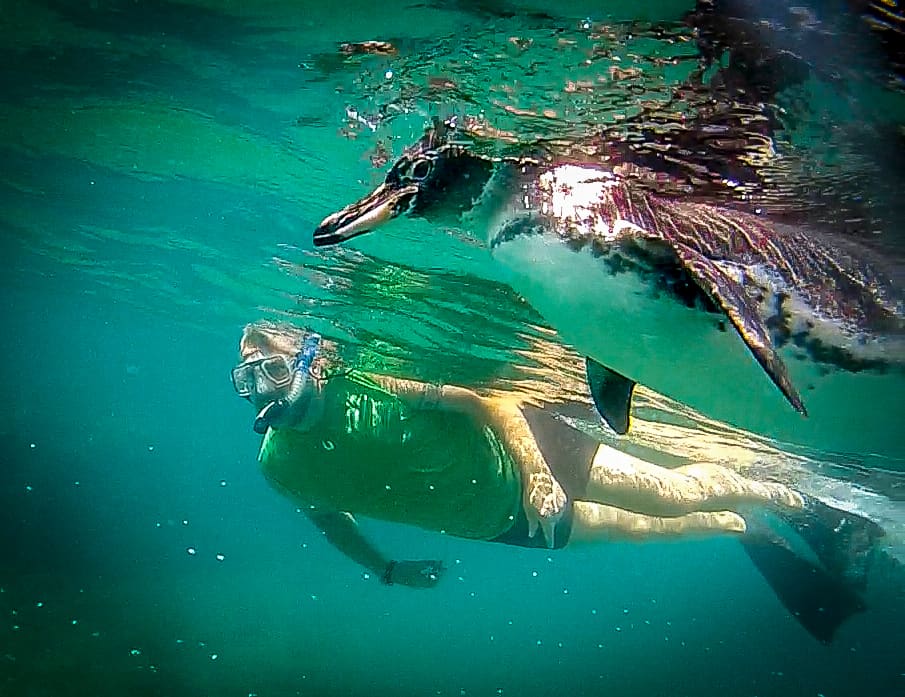
9. Snorkeling and Scuba Diving
The Galapagos Islands are considered one of the top destinations in the world for Scuba diving and snorkeling.
The waters throughout the archipelago are absolutely teeming with marine life, most of which can’t be found anywhere else.
With crystal clear water pretty much all year round, the high levels of visibility ensure stunning sightings.
There are around 30 prime dive sites in the Galapagos (including hotspots like Darwin’s Arch, Shark Point, and Gordon Rocks), but you can snorkel almost anywhere.
While anyone can snorkel without certification, it’s important to be aware of the strong currents that run through the Pacific.
If you’re snorkeling in the ocean, always use the buddy system. And don’t forget to bring an underwater camera, as marine animals are likely to come right in front of you!
READ MORE: Secrets to Swimming with Galapagos Penguins (Video)
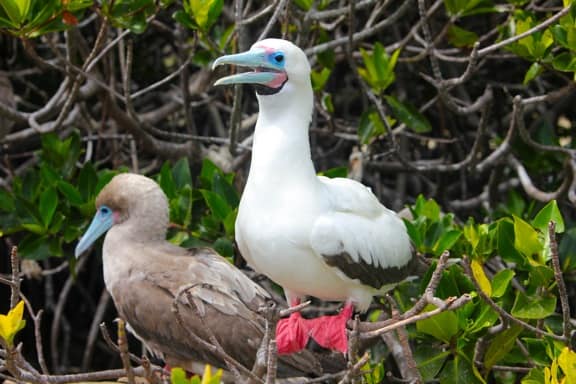
10. Photograph Wildlife
Wildlife photography is on most people’s minds when they visit the Galapagos Islands, with everyone hoping for photos worthy of National Geographic’s “Your Shot.”
And while the islands’ landscapes are undoubtedly stunning, it’s the opportunity for snapping unique wildlife portraits that attracts most photographers.
Most Galapagos Islands animals have no fear of close proximity to humans. So you’ll easily get close up shots of Galapagos sea lions, marine iguanas, giant tortoises, and birds.
Some may even approach so closely that you’ll have to back up in order to get their whole body in the shot!
But it’s important to remember not to disturb them or try to coerce them into moving into a more suitable position for your shot. If they look uncomfortable, it’s best to back away.
If you’re spending much time at the beach (which you should), remember to pack ziplocks or dry bags to keep your equipment sand-free.
READ MORE: 30 Amazing Galapagos Islands Animals

11. Birdwatching
The entire Galapagos archipelago is a protected sanctuary for an array of weird and wonderful wildlife.
That includes 56 different species of native birds (45 of which are endemic birds, and only exist in the Galapagos).
Look to the land, sea, and sky for a range of sea birds, shore birds, and migratory species.
Even those who don’t normally consider themselves interested in birds will be fascinated by the blue footed boobies, American flamingos, Galapagos penguins, and puffed-up red throat pouches of the male frigate bird.
READ MORE: Galapagos Birds: 25 Spectacular Species You Can See on a Galapagos Cruise
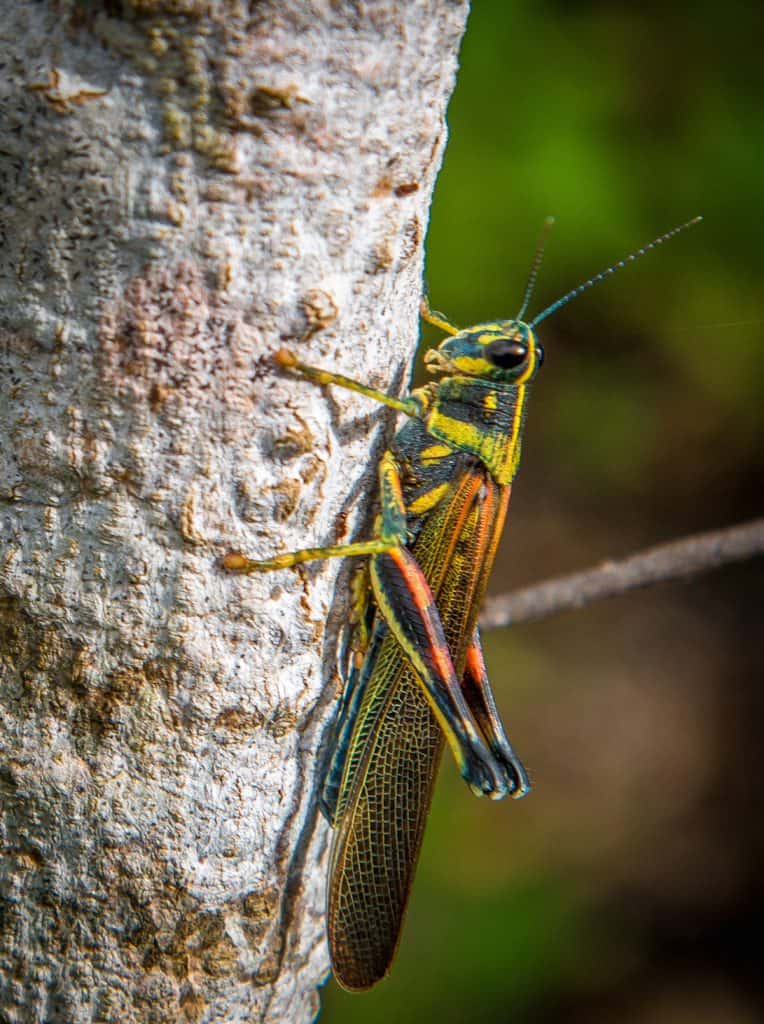
12. Hiking
With 97% of the Galapagos protected as national park, it’s no surprise that there are many exceptional hiking trails throughout the islands.
Note that not all of the islands can be explored by visitors. But there are many opportunities for hiking through varied terrain, from blackened lava rock trails to coastal beach walks and exploration of the lush, green highlands.
One of the most popular hikes in the Galapagos is the trek up the Sierra Negra volcano, which is located on Isabela Island.
Here you’ll climb for five miles to the top of the volcano, until you reach a moon-like landscape covered in volcanic cones.
Another great hike is on the island of Sante Fe, where you can walk through a forest where the cacti grow 10 meters (32 feet) high.
If you’re planning on hiking during your time here, make sure you bring proper walking shoes, as many trails are rocky and best not attempted in flip-flops.
READ MORE: 25 Biggest Forests in the World (For your World Travel Bucket List)
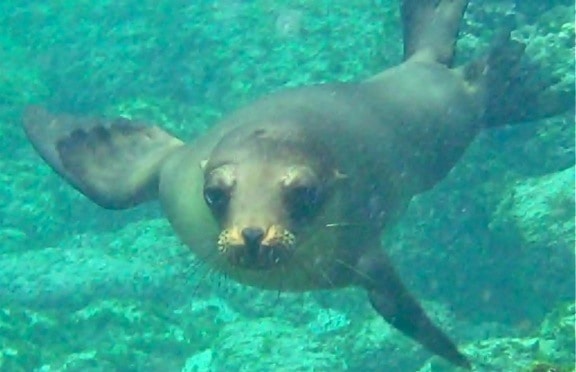
13. Sea Kayaking, Swimming, and Surfing
There are many different ways to enjoy the water in the Galapagos, and you don’t have to snorkel or Scuba dive in order to have an incredible experience.
Shallow places like Gardner Bay and Tagus Cove offer the opportunity to swim alongside all kinds of wildlife.
Fascinating Galapagos Islands fact: When you’re swimming alongside the green sea turtle, think about the fact that this species is believed to have swum alongside dinosaurs some 66 million years ago!
You can also rent sea kayaks and surfboards from local outfitters. One of the best surf beaches is Galapagos Beach, but surfing may be restricted at other locations.
Make sure you check the regulations of each beach before you rent a board.
READ MORE: 40 Green Travel Tips: (The Ultimate Guide to Sustainable Travel)

14. Chocolate and Coffee
The Galapagos is best known for its wildlife diversity, but it also has some interesting agriculture. Dotted throughout the islands are fincas (a.k.a. farms) that produce both chocolate and coffee.
The Galapagos has to import most of its food and water from the mainland, but coffee and chocolate are in no short supply here.
Coffee plantations have operated there since 1869, when it was discovered that arabica typica coffee plants would thrive in the rich volcanic soil.
Coffee is now the islands’ biggest export. Fascinating Galapagos Islands fact: Starbucks is their biggest importer.
You can visit coffee plantations on the island of Santa Cruz and learn about the journey of the coffee from cherry to bean to cup.
Also on the island is a shop called Chocolapagos, where you can find chocolate turtles from a local chocolatier.
READ MORE: Best Coffee in the World (A Gourmet’s Guide to 30 Types of Coffee)
Wildlife in the Galapagos Islands
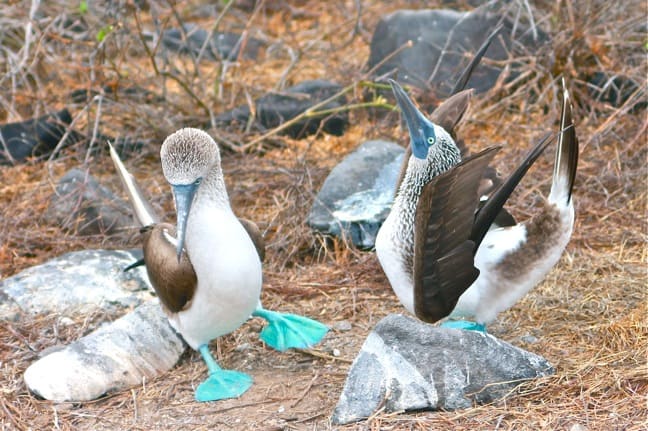
15. Blue-footed Booby
One of the signature species of the Galapagos Islands, the blue-footed booby is a sea bird known for its distinctively colorful feet (and its fanciful mating dance).
Have you ever wondered why this booby has blue feet? It’s believed that carotenoid pigments from their diet concentrate in their feet, which results in the blue coloring.
The higher concentration of pigment a bird has, the more intense the color of his feet.
While the blue-footed booby is the most famous, the Galapagos is actually home to three different types of booby (a close relation of the gannet).
You should also keep an eye out for the red-footed and Nazca (a.k.a. masked) boobies. Watching them plunge from the air into the open ocean and emerge with a fish in their beak is quite the visual treat!
READ MORE: 35 Beautiful Birds of Hawaii and the Polynesian Triangle
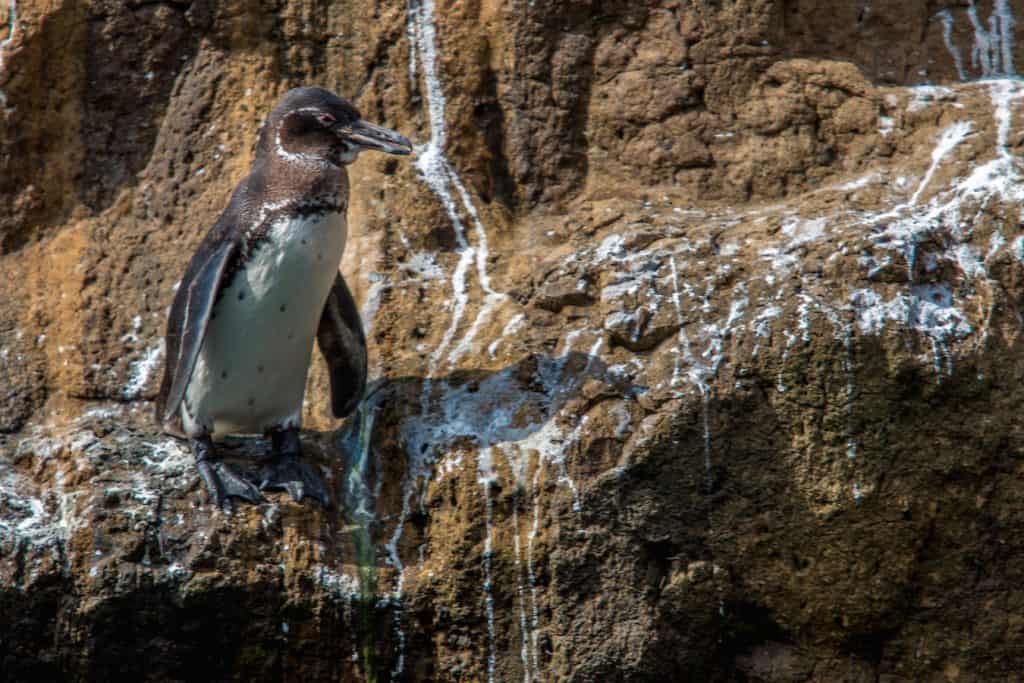
16. Galapagos Penguin
The Galapagos Penguin is quite the anomaly. It’s the only penguin species in the world that lives in the northern hemisphere, and breeds in the tropics above the equator.
It’s also the smallest species of penguin in South America.
Although they have adapted to the warm weather, you’ll usually find the Galapagos penguin around the western islands, as the cool currents here mean that the water temperature stays relatively low.
You’ll most often see them swimming in places around Bartolome Island or walking on land around the coastlines of Isabela and Fernandina.
READ MORE: Secrets to Swimming with Galapagos Penguins (Video)
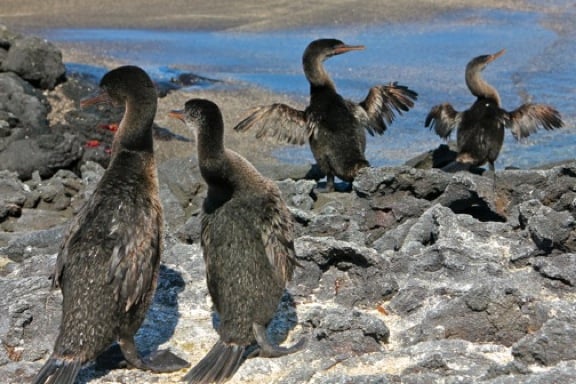
17. Flightless Cormorant
Another Galapagos Island anomaly, the flightless cormorant is the largest cormorant species in the world, but the only one that is unable to fly.
This genetic adaptation is due to the fact that there are no natural predators in the Galapagos to threaten them, so flying has never been necessary.
As a result, their wingspan has evolved over time to the point where it is around a third of the size that they would need if they wanted to take flight. So instead, they swim down in the ocean to feed on algae.
You’ll usually find these bizarre birds breeding on the islands of Isabela and Fernandina.
READ MORE: Flightless Cormorants Mating Dance in Galapagos Islands
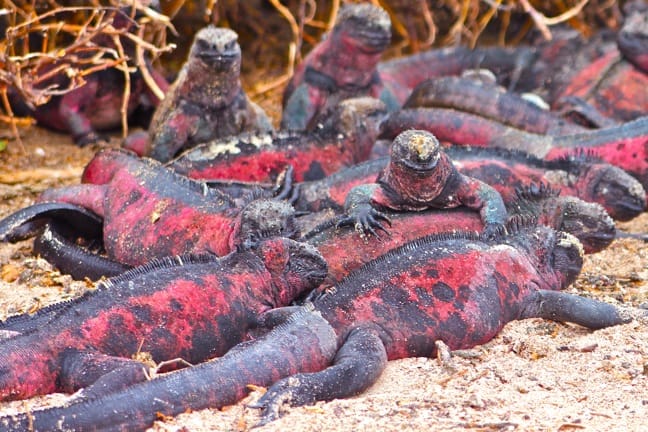
18. Marine Iguanas
The Galapagos marine iguana is the only lizard in the world that swims in the ocean. They are unique to the islands, but they’re also impossible to miss.
You’ll find thousands of them across the islands (in fact, there are thought to be upwards of 300,000), though the populations on Isabela and Fernandina are the largest.
They are typically black, with a dragon-like appearance, though many males will change color when it comes time to mate.
Breeding season is between January and March, and males will often turn bright red or green to attract mates.
You’ll usually find them lazing about in the sun on rocky shores, or in the water searching for seaweed and underwater algae (which they eat exclusively).
READ MORE: Marine Iguanas of the Galapagos Islands (Video)

19. Galapagos Giant Tortoise
The Galapagos Islands are actually named after the giant tortoise (Galapago in Spanish means tortoise).
So naturally these ancient-looking reptiles are one of the archipelago’s biggest draws.
This is the largest type of tortoise in the world, weighing up to 270 kilograms (595 pounds) and living for up to 170 years.
They’re believed to have arrived in the islands from the mainland some two to three million years ago.
Today you can find them in the Santa Cruz Highlands as well as wandering the volcanic slopes of Alcedo.
READ MORE: Galapagos Tortoises (including video of Lonesome George!)
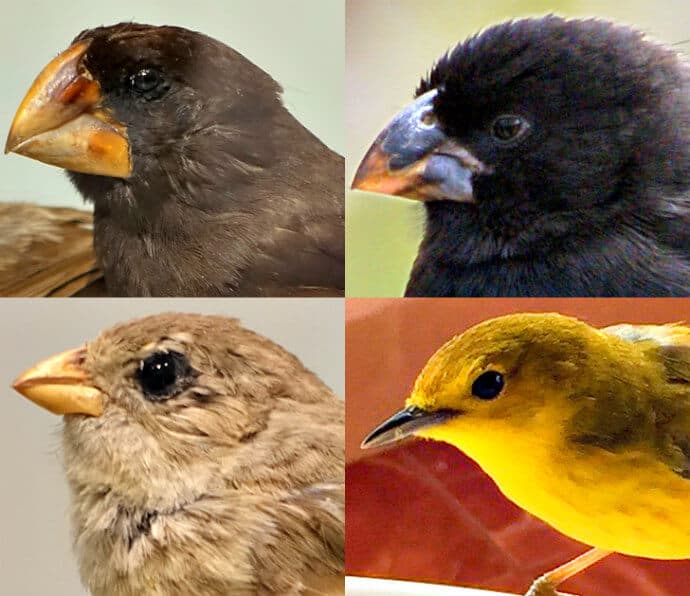
20. Darwin’s Finches
Named for their pivotal role in Charles Darwin’s theories on evolution, there are thirteen species of finches that vary throughout the Galapagos Islands.
After studying the birds for five weeks, Darwin’s theory was that all 13 had evolved from a single species on the mainland, adapting genetically to feed on the different food sources on different islands.
This formed the backbone for the rest of his study, which found similar genetic diversity among the tortoise subspecies.
Darwin’s finches are easily spotted throughout the islands.
Differences between the species are subtle, but they will have noticeable variances in behavior, shape, body size, and/or plumage.
READ MORE: 7 Important Life Lessons I Learned in the Galapagos Islands
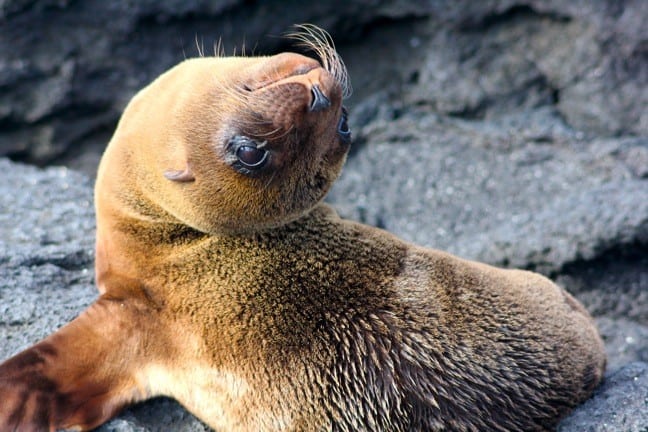
21. Galapagos Sea Lions & Fur Seals
You’ll find the Galapagos sea lion in abundance throughout the islands, as they’re the most common marine mammal in the archipelago.
Head to any beach or any dock, and you’re likely to encounter a sea lion sleeping or swimming close to the shore.
Fur seals are less common and are rarely seen out in the ocean. But you can occasionally spot them napping among the rocks if you head to the western islands.
Their population numbers are actually similar to that of the Galapagos sea lions. But for unknown reasons they generally choose to hang out in more isolated places.
While they appear similar to the Galapagos sea lion, fur seals are smaller, their eyes bulge more, they have larger flippers (which have evolved due to their preference for rocky cliffs), and they have a much thicker coat and skin. –by Meg Jerrard courtesy of Green Travel Media
BIO: Megan Jerrard is an Australian Journalist and the founder and Senior Editor of Mapping Megan, an award-winning travel blog bringing you the latest in adventure travel from all over the globe.
